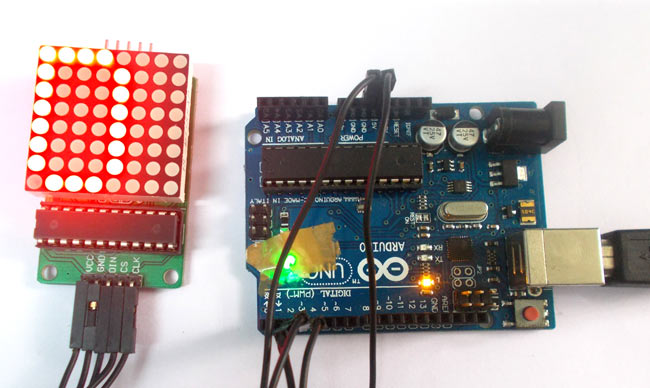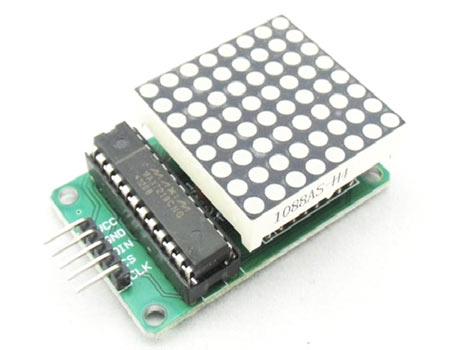In this project we are going to design an 8×8 LED matrix display, for that we are going to interface an 8×8 LED matrix module with Arduino Uno. An 8×8 LED matrix contains 64 LEDs (Light Emitting Diodes) which are arranged in the form of a matrix, hence the name LED matrix.
These matrixes can be made by circuiting 64 LEDs, however that process is time consuming. Now a day they are available in compact forms as shown in below image. These compact modules are available in different sizes and many colors. The cost of module is same as cost of 64 LEDs, so for hobbyists this is easiest to work on.
The bare LED matrix has 16 pin outs with 8 common positive and another 8 common negative. For connecting this matrix directly to a UNO, we need to spare 16 pins on the UNO. With the output pins low on UNO, we cannot spare 16 PINS. So we need to connect this matrix to a driver chip. This driver chip along with matrix comes as a set which is shown in below figure.
This module will be interfaced with Arduino for displaying alphabets, hence the matrix display. First of all for interfacing LED matrix with Arduino, we need to download a library specifically designed for LED MATRIX. This library will be available at: https://github.com/shaai/Arduino_LED_matrix_sketch/archive/master.zip
After downloading the Zip file, extract the contents to ARDUINO folder. (Go to local disk where ARDUINO NIGHTLY software is installed, open the folder, search for folder named “library”, extract the contents of zip file in that folder, restart the program you will now be able to use features for matrix interface)
Components Required
Hardware: Arduino Uno, Power supply (5v), 100 uF capacitor (connected across power supply)
Software: Arduino Nightly
Circuit Diagram and Explanation
The connections which are done between Arduino Uno and LED matrix module is shown in below table.
PIN2 ——————LOAD or CHIPSELECT of LED module
PIN3——————CLOCK of LED module
PIN4 ——————DATAIN of LED module
+5V ——————VCC of LED module
GND ——————GND of LED module
Read More: 8×8 LED Matrix using Arduino
